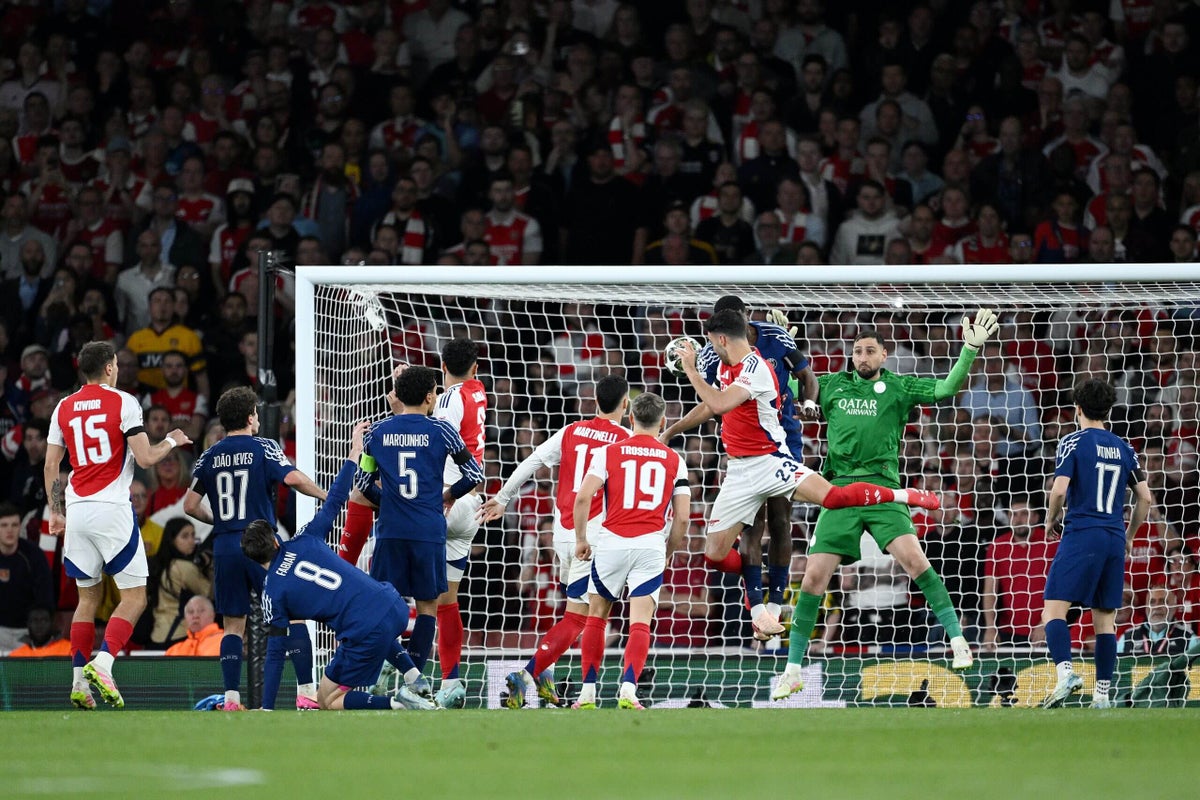Arsenal's Offside Free-Kick: Analyzing the Effectiveness of a Risky Play
Arsenal's recent use of an offside-positioned player during a free-kick routine has sparked significant debate amongst football fans and analysts. Is this a clever tactical innovation or a high-risk, low-reward gamble? Let's delve into the effectiveness of this controversial play.
The Controversial Tactic Explained
The tactic involves positioning a player clearly offside before the free-kick is taken. The intention isn't to score directly from the initial free-kick, but to exploit the confusion and disorganization it creates within the opposing team's defensive wall. The offside player often makes a run towards the goal, drawing defenders out of position and potentially creating space for a teammate to receive a pass and shoot.
This strategy relies heavily on the quick thinking and precision of both the player taking the free-kick and the player making the run. A mistimed pass or a hesitant run can easily lead to a turnover and a dangerous counter-attack for the opposition.
Analyzing the Risks and Rewards
The potential rewards are significant:
- Creating goal-scoring opportunities: The distraction caused by the offside player can create gaps in the defensive wall and open up shooting opportunities for other players.
- Psychological advantage: The unexpected nature of the tactic can unsettle the opposing team, potentially leading to errors and further opportunities.
- Innovation and unpredictability: In a game increasingly focused on tactical analysis and predictability, such a novel strategy can catch opponents off guard.
However, the risks are equally substantial:
- Giving away possession: A poorly executed free-kick can easily result in a turnover, potentially leading to a goal for the opposing team.
- Wasting a valuable set-piece: Free-kicks are valuable opportunities to score, and this tactic risks squandering that advantage.
- Frustrating teammates: If the tactic fails repeatedly, it can negatively impact team morale and disrupt the flow of the game.
Is it a Sustainable Strategy?
The long-term effectiveness of this tactic remains to be seen. While it can yield spectacular results on occasion, its inherent riskiness makes it a questionable long-term strategy. Its success heavily depends on the execution and the specific circumstances of the game. Opponents will quickly adapt and learn to counter this tactic, potentially negating its effectiveness over time.
Comparisons to Other Tactical Innovations
This tactic shares similarities with other unconventional set-piece routines seen in football. However, the blatant offside position makes it significantly more risky compared to other more subtle approaches. Teams like Barcelona and Manchester City have also employed innovative set-pieces, but often focusing on intricate passing movements rather than exploiting offside positions.
Conclusion:
Arsenal's use of the offside free-kick is a fascinating case study in tactical risk-taking. While it presents a potential route to goal-scoring opportunities, the inherent risks and the likelihood of opponents adapting quickly suggest it's unlikely to become a consistently effective strategy. Its use will likely be reserved for specific situations and against specific opponents, rather than becoming a staple of Arsenal's game plan. The question remains: is the potential reward worth the considerable risk? Only time will tell.
Keywords: Arsenal, Offside, Free-kick, Tactics, Football, Soccer, Strategy, Analysis, Set-piece, Goal-scoring, Risk, Reward, Innovation, Tactical Innovation.

